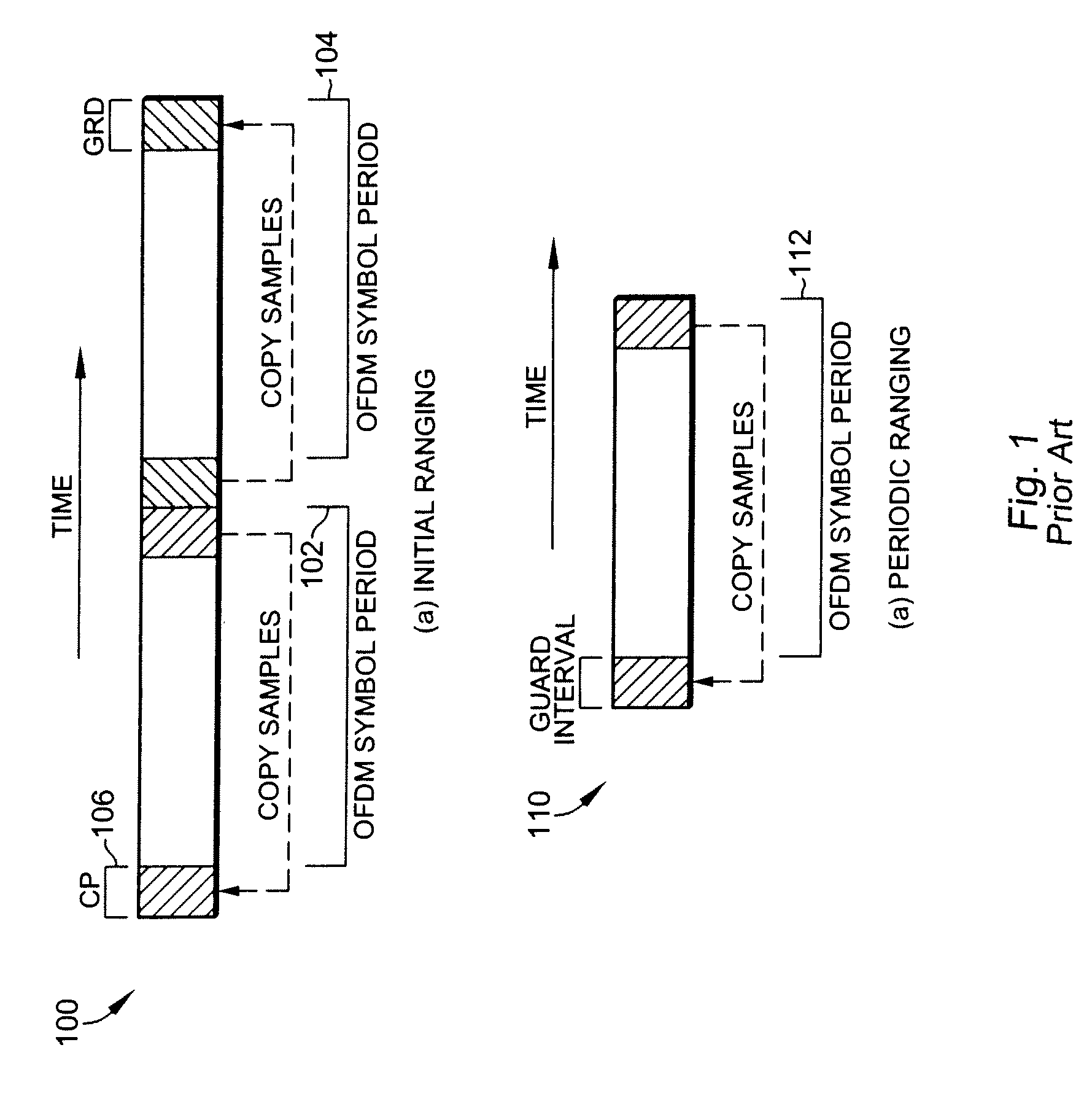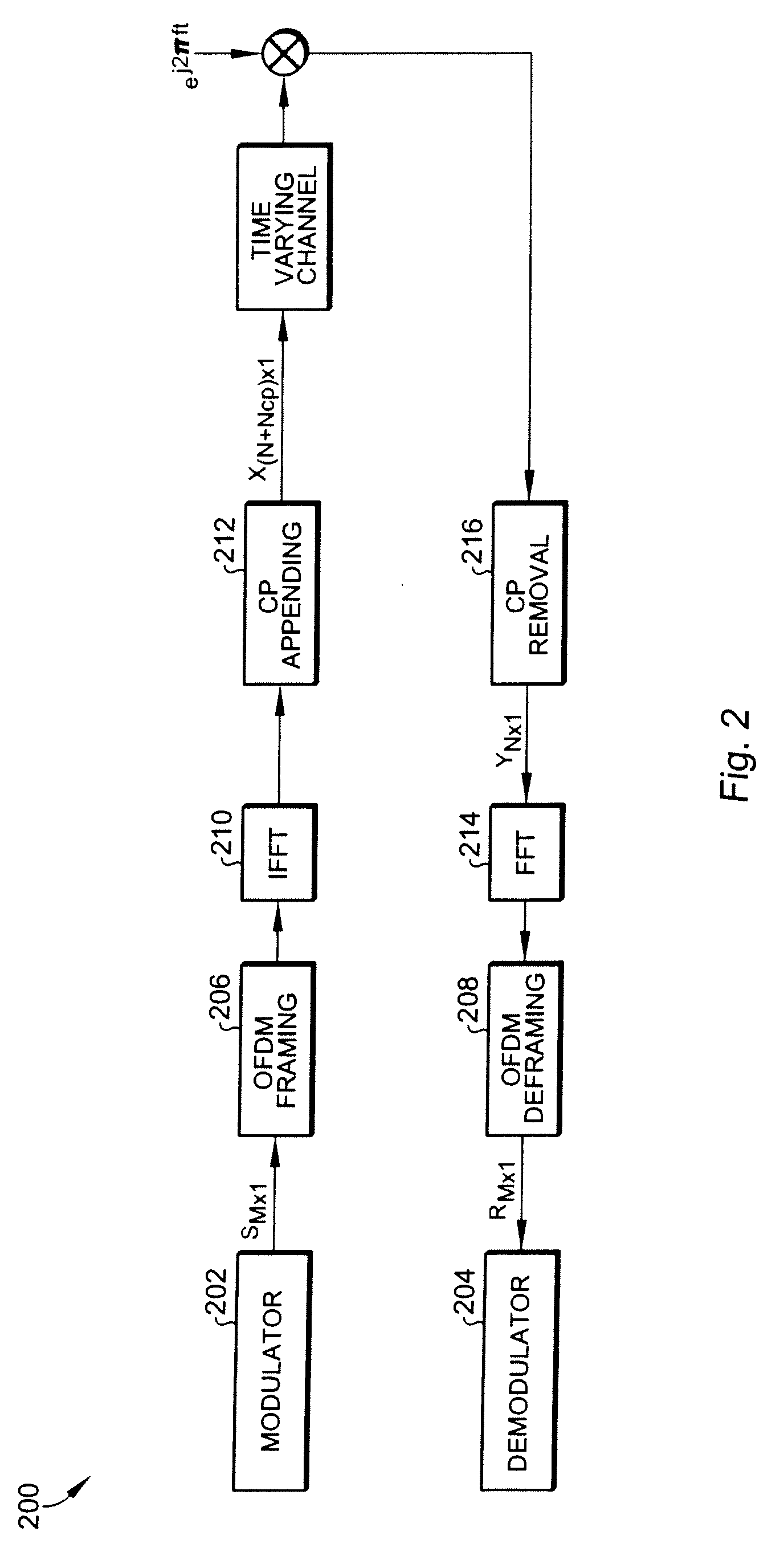Blind carrier frequency offset estimator based on single-ofdm-symbol pn ranging code in multi-user ofdma uplink
a carrier frequency offset and receiver technology, applied in the field of wireless transmission, can solve the problems of loss of orthogonality, complex exponential twiddle on the frequency-domain, and synchronization errors of ofdma, and achieve the effects of reducing the rank of the matrix, simplifying interference calculations, and minimizing energy leakag
- Summary
- Abstract
- Description
- Claims
- Application Information
AI Technical Summary
Benefits of technology
Problems solved by technology
Method used
Image
Examples
Embodiment Construction
[0032]Prior to the introduction of the CFO estimator, we shall develop a base-band signal model for the interleaving OFDMA uplink. Starting by constructing a single-user signal model, we will deduce a multi-user signal model with CFO and a time-variant frequency-selective channel.
[0033]An equivalent base-band single-user transmitter / receiver 200 is illustrated in FIG. 2. FIG. 2 illustrates a single-user base-band signal model of an interleaving OFDMA system. The out-modem part of the transmitter, such as randomization, channel coding, etc, is simplified as a modulator 202, and the receiver part is simplified as a de-modulator 204 respectively. The OFDM Framing / DeFraming block 206, 208 is used for constructing / deconstructing the standard compatible OFDMA transmission frame. Also the IFFT transformation 210 converts the frequency-domain signal into time-domain and the CP is appended 212 to each OFDM symbol after IFFT transformation 210. On the receiver side, FFT transformation 214 and...
PUM
 Login to View More
Login to View More Abstract
Description
Claims
Application Information
 Login to View More
Login to View More - R&D
- Intellectual Property
- Life Sciences
- Materials
- Tech Scout
- Unparalleled Data Quality
- Higher Quality Content
- 60% Fewer Hallucinations
Browse by: Latest US Patents, China's latest patents, Technical Efficacy Thesaurus, Application Domain, Technology Topic, Popular Technical Reports.
© 2025 PatSnap. All rights reserved.Legal|Privacy policy|Modern Slavery Act Transparency Statement|Sitemap|About US| Contact US: help@patsnap.com



